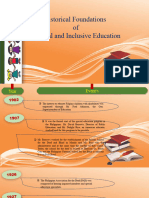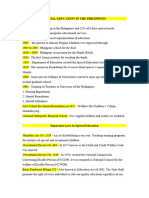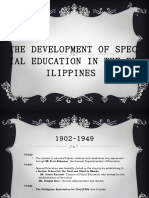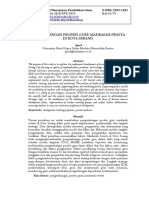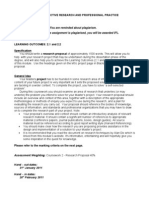0% found this document useful (0 votes)
8 views3 pagesEd 4 - Final Transcript
The document discusses the evolution of special education, highlighting key historical milestones from the 18th century to the present, both globally and in the Philippines. It emphasizes the role of notable figures and legislation that have shaped the field, particularly during the American occupation, which fostered inclusive education. The concept of inclusivity is noted as a significant development in the late 20th century, promoting diversity and equal opportunities for marginalized groups.
Uploaded by
delizflooCopyright
© © All Rights Reserved
We take content rights seriously. If you suspect this is your content, claim it here.
Available Formats
Download as PDF, TXT or read online on Scribd
0% found this document useful (0 votes)
8 views3 pagesEd 4 - Final Transcript
The document discusses the evolution of special education, highlighting key historical milestones from the 18th century to the present, both globally and in the Philippines. It emphasizes the role of notable figures and legislation that have shaped the field, particularly during the American occupation, which fostered inclusive education. The concept of inclusivity is noted as a significant development in the late 20th century, promoting diversity and equal opportunities for marginalized groups.
Uploaded by
delizflooCopyright
© © All Rights Reserved
We take content rights seriously. If you suspect this is your content, claim it here.
Available Formats
Download as PDF, TXT or read online on Scribd
/ 3










